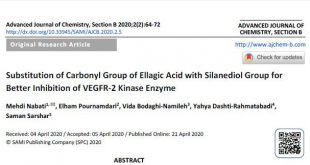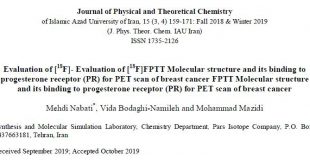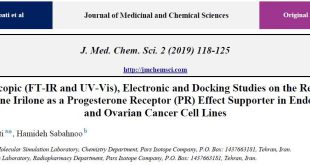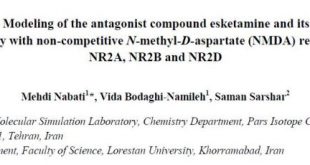۱۱C-LY2795050 Radiopharmaceutical
A receptor into the cells has two main operations when it makes complex with an agonist compound and or an antagonist molecule. The agonist-receptor complex formation causes the receptor activation, but the binding of antagonist molecule to the receptor causes its blocking. In pharmacology, the antagonist compounds have tendency for their desired receptors and inhibit their function. The antagonist-receptor complex formation happens by binding the small molecule to the active site or to the allosteric site on the receptor. Depending on the longevity of the antagonist-receptor complex, the activity of the antagonist compounds may be reversible or irreversible. One main group of the receptors into the human cells is the opioid receptors (OR). These receptors belong to a various group of G protein coupled receptors with opioids as ligands. The endogenous opioids include nociceptin, endorphins, dynorphins, endomorphins and enkephalins. These receptors are mainly distributed in the brain, in the spinal cord, on peripheral neurons and digestive tract. Mu and Kappa receptors are the most important opioid receptors. The µ-opioid receptors (MOR) have a high affinity for β-endorphin and enkephalins. In contrast, the κ-opioid receptors (KOR) like to make complex with dynorphins. High levels of the kappa opioid receptors have been detected in the solitary nucleus, prefrontal cortex, parabrachial nucleus, periaqueductal gray, spinal trigeminal nucleus, raphe nuclei, locus coeruleus, ventral tegmental area, midline thalamic nuclei, substantia nigra, hypothalamus, dorsal striatum (putamen, caudate), hippocampus, ventral striatum (nucleus accumbens, olfactory tubercle), bed nucleus stria terminalis and amygdala. On the other hand, the Mu opioid receptors (MOR) exist presynaptically in the periaqueductal greay region and in the superficial dorsal horn of the spinal cord. Also, high levels of these receptors (MORs) have been detected in the external plexiform layer of the olfactory bulb, the nucleus accumbens, in several layers of the cerebral cortex, and in the nuclei of the amygdala.
۱۱C-LY2795050 is a novel antagonist small molecule that uses for positron emission tomography (PET) scan. The different literatures have been showed that this antagonist radiopharmaceutical has high affinity to formation of the KOR-LY2795050 complex. These studies have been showed that this molecule binds to the receptor selectively.
In 2020, Dr. Mehdi Nabati optimized the molecular structure of [11C]LY2795050 radiopharmaceutical using B3LYP/6-31+G(d,p) basis set of theory at room temperature by Gaussian 03 software. Its docking analysis with kappa (κ) and mu (µ) opioid receptors (KOR and MOR) was done using Molegro Virtual Docker (MVD) software by Dr. Nabati. The molecular orbitals calculations (global indices) indicated this molecule prefers to react only with powerful nucleophile agents. On the other hand, the docking studies showed that the possibility of the ligand-KOR complex formation is more than the ligand-MOR complex. The MOR residues containing Phe 1104, Gln 1105, Glu 1011, Leu 1032, Arg 1145, Asn 1020, Thr 1021, Val 1103, Gly 1030, His 1031 and Asp 1070 played main role in the ligand-receptor complex formation. In contrast, the KOR-ligand complex formation was mainly done by the residues Tyr [B] 119, Thr [B] 63, Tyr [A] 66, Thr [A] 63, Tyr [B] 66, Ile [B] 62, Ser [B] 116, Leu [B] 120, Ser [A] 116, Pro [B] 59 and Ile [A] 62.
For more information about this radiopharmaceutical please read the following article:
 Iranian Chemist شیمیدان ایرانی
Iranian Chemist شیمیدان ایرانی




